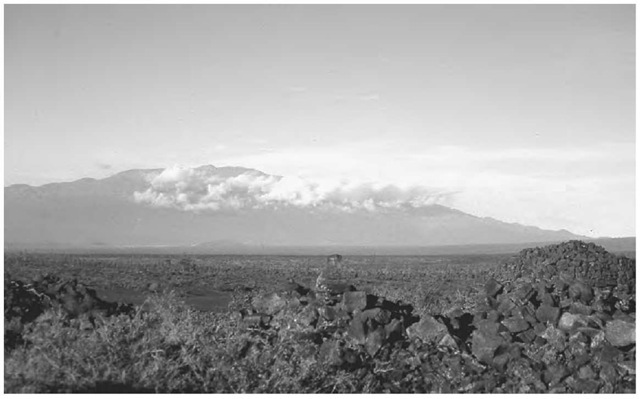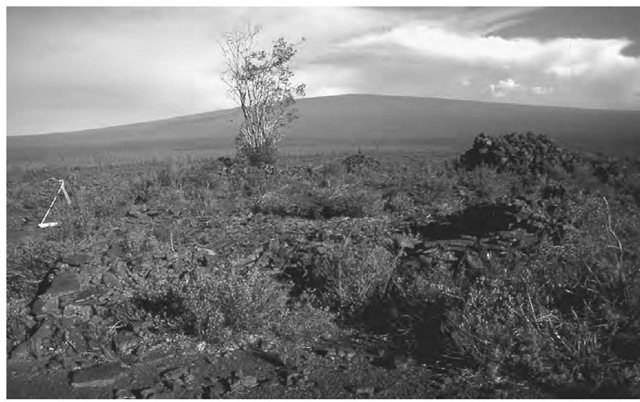Undoubtedly the best known and most conspicuous material remains of Polynesian culture are the temple platforms and enclosures, variously known as marae in much of central Polynesia (the Marquesas, the Society Islands) and Aotearoa (New Zealand), ahu in the Tuamotus and remote Rapa Nui (Easter Island), and heiau in the Hawaiian Islands (where the term ahu refers just to the altar). The ahu of Easter Island, with their famous statues, or moai, are undoubtedly the best known, but many hundreds of these temple platforms and enclosures are found throughout Polynesia, and very many more existed in the past.
The temple platform or enclosure was a sacred place constructed, used, and maintained by a particular family or social group, or for people of a certain social rank. In the Society Islands, for example, there existed maraes serving individual households; the inhabitants of a district; people in the same kinship group; those in particular occupations such as healers, canoe builders, and fishermen; and the high chiefs or ari’i nui. Temple sites were used for a variety of purposes. Thus in Hawai’i, the large and elaborate lu-akini heiau, which were the exclusive preserve of high chiefs, might be used for investitures or religious rites including sacrifices, while at the other end of the scale, modest ko’a were built by commoners as simple fishing shrines. There existed war heiau, medicinal heiau, navigational heiau, agricultural heiau, and a host more, all dedicated to the appropriate gods.
Why a given temple site was located in a particular place or constructed in a particular way is generally lost to us, but there is every reason to suppose that a strict set of sacred protocols had to be followed, as can still remain true today. It is possible, for example, that an extraordinary concentration of temple platforms on the tiny and remote Hawaiian outlier of Necker Island may be due to the location of this isolated rocky outcrop precisely on the Tropic of Cancer. It has been suggested that many of the temple sites were astronomically oriented, as was, for exmple, the inland ahu Huri a Urenga on Easter Island. However, attempts to identify overall patterns have met with little success. On many islands, Rapa Nui being a particularly clear example, it is evident that the predominant trend is simply to orient temple sites with respect to the coast, either reflecting a general rela-tionship with the sea or the constraints of the local topography. This has caused some archaeologists to conclude that astronomy played no part at all in determining temple orientations.
The ruins of the highest heiau in Hawai’i, Ahu a ‘Umi, at an elevation of 1600 meters (5250 feet) in the saddle of the Big Island, viewed from the first of two different angles. In the background of this view is Mauna Kea with the modern observatory at its summit.
The truth undoubtedly lies between these two extremes. The fact that there are no obvious systematic astronomical associations is hardly surprising, given the widely ranging functions and purposes of the different types of temple site. Even where they were important, astronomical considerations are likely to have been just one of a range of factors affecting temple location and design, and were not necessarily reflected in the orientation. Some surviving snippets of oral history do indicate an interest in the annual progress of the rising sun up and down the eastern horizon (one of the few observation points mentioned explicitly is Cape Kumukahi in the Big Island of Hawai’i), but this account does not point to a direct connection with any heiau.
Accounts do exist of temple platforms being used for sun observations in Hawai’i, and of the use of artificial horizon foresights in Mangareva, an island in French Polynesia. But no accounts mention platforms being actually aligned upon the sun. In one case, a surviving sacred hula chant appears to describe a solstitial alignment from a heiau on the Hawaiian island of Kaua’i stretching along the high cliffs of the Na Pali coastline of the island. But even here, there is no suggestion that the alignment is directly reflected in the orientation of the platform itself. Similarly, certain navigational heiau are said to have been associated with voyaging stars, without suggesting that they were oriented upon them. All this complicates efforts to tie together ar-chaeoastronomical field data with relevant fragments of oral tradition, but does not make it impossible, as the following example shows.
The ruins of the highest heiau in Hawai’i, Ahu a ‘Umi, at an elevation of 1600 meters (5250 feet) in the saddle of the Big Island. In the background of this view is the volcano Mauna Loa.
Kahikinui is a remote area on the leeward side of the Hawaiian island of Maui, on the southern slopes of the volcano Haleakala. Recent survey work here has revealed an unusually well preserved pre-conquest landscape including households, cultivation areas, and almost thirty heiau, mostly of a distinctive notched enclosure design, which all date to a similar period around c.e. 1600. It is very unusual to find so many heiau in such a restricted area and within such a well-defined archaeological context. This enables us both to spot consistent orientation patterns that are likely to have been intentional and meaningful and to suggest plausible interpretations related to our broader knowledge of the cultural context. The structure, location, and orientation of the Kahikinui heiau suggest that they may be divisible into four categories, each of which relates to one of the four main gods in the Hawaiian pantheon. One set face north, one east, and one relate to the sea. The last tend to overlook plantation areas and may relate to Lono, the god associated with dryland agriculture. Their orientations are consistently around twenty degrees north of east, which strongly suggests a particular celestial target—the horizon rising position of the Pleiades. This asterism is known to have been of particular significance in the Hawaiian agricultural and ritual calendar, because its heliacal and acronical rise marked the beginning of the two halves of the Hawaiian year. On the northern side of Maui, on the isolated peninsula of Kalaupapa, is another heiau incorporating a similar alignment. It is found on a promontory whose traditional name— Makali’i—means Pleaides in Hawaiian.
The example of the Kahikinui heiau serves to illustrate how little we would know (and generally do know in other parts of Polynesia) about the meaning of temple orientations but for being able to combine alignment evidence from a well-defined group of sites with oral history.


